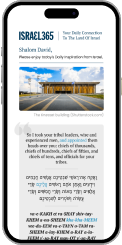A Roman-era boundary stone recently discovered in Upper Galilee provides valuable insights into local history and broader political dynamics during the late 3rd century CE. The study contextualizes the discovery within Roman administrative practices, rabbinic literature on land boundaries, and settlement patterns in the Late Roman and Byzantine periods, shedding light on the complexities of land ownership and taxation in the region.
Published in the academic journal Palestine Exploration Quarterly, the study highlights that the basalt stone unearthed at the site of Abel Beth Maacah in 2022 confirms the existence of two previously unknown villages, Tirthas and Golgol. The name “Abel Beth Maacah” survives in the modern village Abil el-Qamh, though it disappeared from records by the 3rd and 4th centuries. Eusebius’ Onomasticon misidentifies or omits it, possibly reflecting its diminished significance.
It also offers potential evidence of tensions between the local population and Emperor Diocletian, as described in the Jerusalem Talmud.
In 293, Diocletian instituted a tetrarchic system that divided the territory between two senior emperors (augusti), assisted by their designated successors (caesares). The stone features a Greek inscription naming the four rulers of the Tetrarchy: Diocletian, Maximian, Constantius, and Galerius. It notes the supervision of a Roman official, Baseileikos, in demarcating field boundaries. The villages mentioned, Tirthas and Golgol, are not documented in other sources, but scholars have identified possible connections to nearby locations. Tirthas may correspond to Turritha, a site in modern-day Lebanon, while Golgol is linked to the hill known today as Giv’at Egel (formerly Tell Ajul), based on linguistic similarities.

The Greek inscription on the stone mentions the four sovereigns.
“Diocletian and Maximian Augusti, and Constantius and Maximian, Caesars, have ordered this stone to be set up, marking boundaries of fields of Tirthas (and) Golgol/m; Baseileikos, vir perfectissimus (supervised),” reads the text as translated in the paper.
The discovery relates to Diocletian’s extensive fiscal reforms involving detailed land surveys and tax collection measures. The stone is part of about 40 similar artifacts found exclusively in northern Israel, southern Lebanon, and western Syria, a concentration not observed elsewhere in the Roman Empire. This regional anomaly suggests unique administrative practices, possibly influenced by fragmented land ownership. According to Dr. Avner Ecker and Prof. Uzi Leibner, Roman officials may have implemented these stones to address taxation challenges in areas where small landowners paid taxes independently rather than through centralized city authorities.
The inscribed stone had been reused about 1,000 years later, during the rule of the Mamluk Sultanate, to cover a medieval Mamluk grave at the site of Abel Beth Maacah in the northern Hula Valley.
Ecker emphasized that the stone was not discovered in its original location, but he believed it came from a nearby area.
“It is a heavy stone; it was not moved for long distances,” Ecker noted.

The discovery hints at a settlement decline. Many settlements in the region were abandoned during the transition from the Roman to the Byzantine period, with a significant decline in population in the northern Hula Valley and Golan Heights. By the early Islamic period, the area was almost entirely deserted.
The use of Greek on the inscription, rather than Latin, reflects the linguistic and cultural shifts occurring within the Roman Empire at the time. Greek was the dominant language in the region, and all known Tetrarchic boundary stones from this period share this characteristic.
Excavations at Paneas reveal a dramatic decline at the start of the Byzantine period, likely tied to over-taxation and economic pressures. The Jerusalem Talmud and Lactantius provide corroborating accounts of tax burdens and their consequences.
The researchers connected the discovery to a passage in the Jerusalem Talmud, which recounts anecdotes about Diocletian’s interactions with Jewish communities. The Talmud describes how Diocletian, mocked in his youth as a swineherd by Jewish students, sought retribution upon becoming emperor but ultimately showed tolerance. One story highlights the fiscal pressures imposed on Paneas (Banias), a regional hub with a mix of pagan and Jewish residents. Scholars suggest that Diocletian’s reforms, including establishing meticulous boundary markings, may have contributed to the perception of oppression described in the Talmud.
The absence of similar stones elsewhere in the Roman Empire remains a mystery. Possible explanations include poor preservation, undiscovered artifacts, or unique administrative challenges in this region. Another unresolved question is the identity of Baseileikos, the Roman official named on the stone. Other boundary stones in the area mention a different official, Aelius Statutus, suggesting they may have collaborated or divided responsibilities.
This discovery provides a rare glimpse into the administrative practices of the Roman Empire and their impact on local communities. It also supports Talmudic references to fiscal pressures under Diocletian’s rule while enriching the historical understanding of the Galilean and Golan landscapes. Dr. Ecker noted that the boundary stones demonstrate the meticulous efforts of Roman officials to audit the region during this period of reform.






